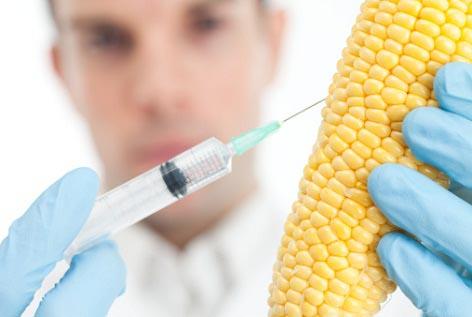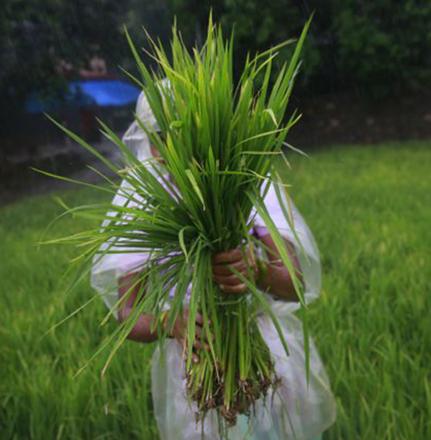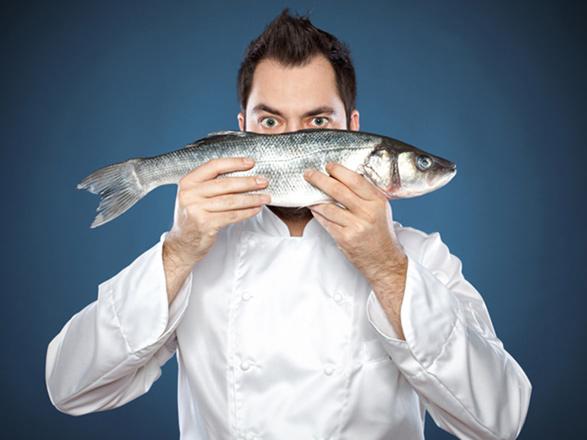You are here
The long, slow march of ‘biofortified’ genetically-modified food
By AFP - Jul 22,2014 - Last updated at Jul 22,2014

PARIS — In 1992, a pair of scientists had a brainwave: how about inserting genes into rice that would boost its Vitamin A content?
By doing so, tens of millions of poor people who depend on rice as a staple could get a vital nutrient, potentially averting hundreds of thousands of cases of blindness each year.
The idea for what came to be called “golden rice” — thus named for its bright yellow hue — was proclaimed as a defining moment for genetically-modified food.
Backers said the initiative ushered in an era when GM crops would start to help the poor and malnourished, rather than benefit only farmers and biotech firms.
“It’s a humanitarian project,” Ingo Potrykus, professor emeritus at the Swiss Federal Institute of Technology (ETH), one of the co-inventors of golden rice, said in a recent interview with AFP.
Yet the rice is still a long way from appearing in food bowls — 2016 has become the latest date sketched for commercialisation, provided the novel product gets the go-ahead.
With $30 million (23 million euros) invested in it so far, the odyssey speaks tellingly of the technical, regulatory and commercial hurdles that have beset the “biofortified food” dream.
First, it took scientists years to find and insert two genes that modified the metabolic pathway in rice to boost levels of beta-carotene, the precursor to Vitamin A.
After that came the biosafety phase, to see if the rice was safe for health and the environment — and if beta-carotene levels in lab plants were replicated in field trials in different soils and climates.
There were also “bio-efficacy” experiments to see whether the rice did indeed overcome vitamin deficiency, and whether volunteers found the taste acceptable.
These tests are still unfolding in the Philippines, Indonesia and Bangladesh, said Bruce Tolentino, deputy director general of the Philippines-based International Rice Research Institute (IRRI).
“We have been working on this for a long time and we would like to have this process completed as soon as possible,” he said AFP.
But “it depends on the regulatory authorities. That is not under our control”.
Antonio Alfonso at the Philippine Rice Research Institute, which partners IRRI in the not-for-profit development of golden rice, said “it will be two or three more years before we can apply for commercialisation.”
The rice’s yield may also have to be tweaked to boost its appeal to farmers, whose buy-in is essential, he said.
Super banana
Coming on the heels of golden rice is the “super banana” developed by the Queensland University of Technology in Australia with the help of the Bill and Melinda Gates Foundation.
Genetically designed, like golden rice, to be enriched with beta-carotene, the bananas were sent to the United States in June for a six-week trial to measure by how much they lifted Vitamin A levels in humans.
If all goes well, they will start to be grown commercially in Uganda in 2020.
Project leader James Dale said so-called cooking bananas grown as the staple food in East Africa were low in Vitamin A and iron.
“Good science can make a massive difference here,” he said.
Other research into biofortified food has looked at boosting levels of important micronutrients in cassava and corn, also called maize, but progress has also been faltering.
It took 15 years of enclosed research in the lab for British scientists this year to decide to seek permission for field trials of a plant called false flax (Latin name Camelina sativa).
Engineered to create omega-3 fat, the plant could be used as feed in fish farming. It would spare the world’s fish stocks, which provide food pellets for captive salmon, trout and other high-value species.
Environmental groups are defiant about GM-fortified foods. Some have dubbed golden rice “fool’s gold”.
Greenpeace, the most vocal and influential of the critics, says the risks of GM contamination to other plants and impacts on health may not emerge for years.
There are also suspicions that developing countries are being used as a technological testbed — and contentions that malnutrition will not be ended by a magic bullet fired from a gene lab.
“This whole Vitamin A issue is a red herring,” said Janet Cotter, a scientist with Greenpeace at the University of Exeter, southwestern England.
“Access to a better and diverse diet is what people need, not a technical fix, [not] something based solely on rice or bananas.”
Andrea Sonnino, chief of the Research and Extension Unit at the UN’s Food and Agriculture Organisation, said ensuring food security and a decent diet were very complex.
GM crops had a part to play in the solution, but not exclusively so.
“We have to go with a set of possible answers to problems that in many cases are technological and in many cases are not, they are social, economic and so on,” he said.
“We have to work in different ways, and not only on the technological front.”
Related Articles
LOS BANOS, Philippines — Rice-growing techniques learned through thousands of years of trial and error are about to be turbocharged with DNA
Clinical Dietician Some of our poor food choices have the ability to reduce testosterone, diminish sex drive, reduce sensitivity, alter
By Sheela ShethFood Expert Concealed amidst the grassy meadows and mountains is this hardy and most versatile grassy herb chive plant n



















